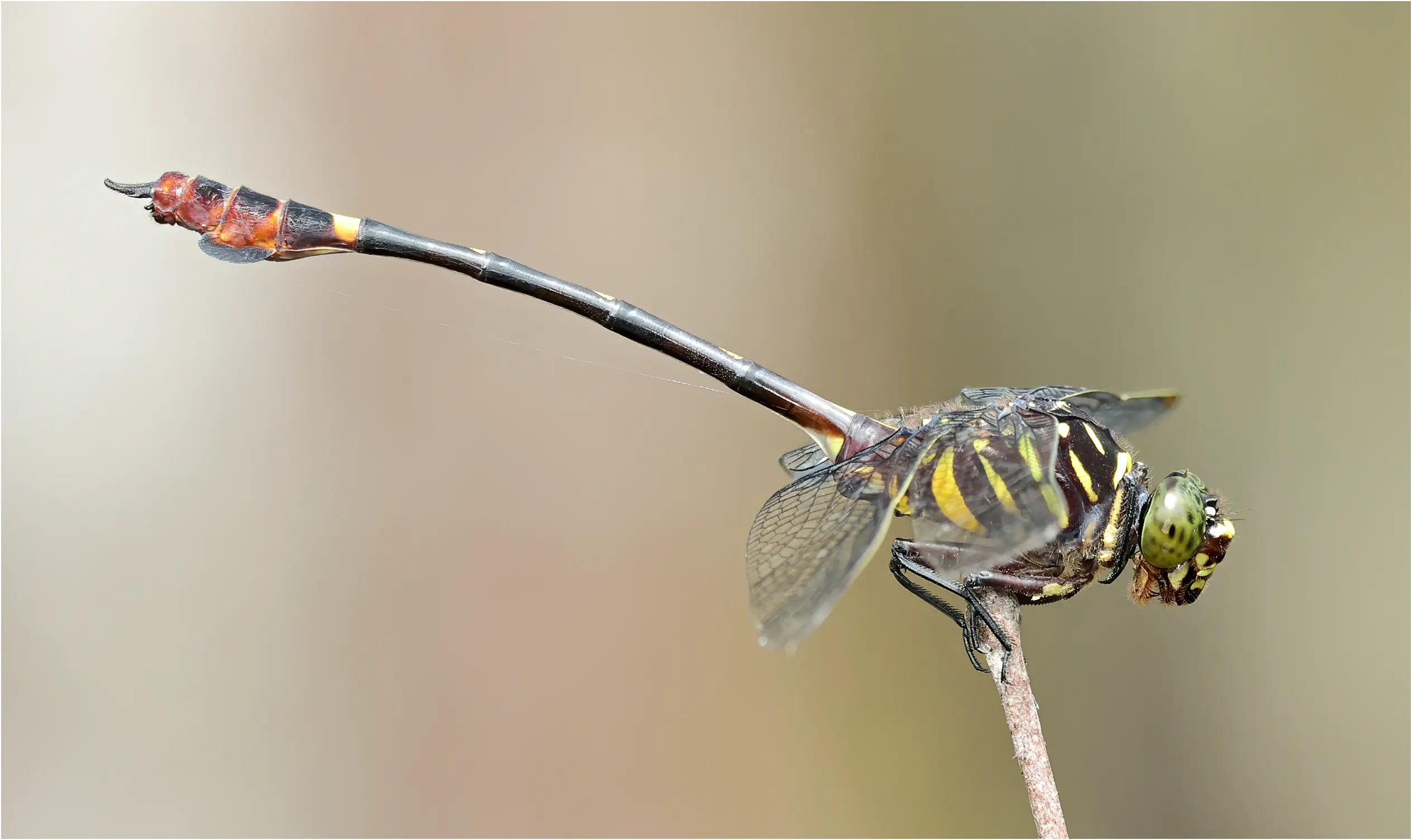
Ictinogomphus acutus male (1) is finally an Ictinogomphus that does not pose any identification problems; it should be remembered that this is not the case elsewhere in Asia, where Ictinogomphus decoratus (present in Borneo), rapax (here in Thailand) and pertinax (here in Vietnam) pose a problem and are awaiting revision, because many of us now think that they constitute only one species.
Its thoracic patterns, the very discreet coloration of the dorsal face of the first abdominal segments and especially the orange-red coloration of the last three segments make it easy to separate it from other Ictinogomphus.
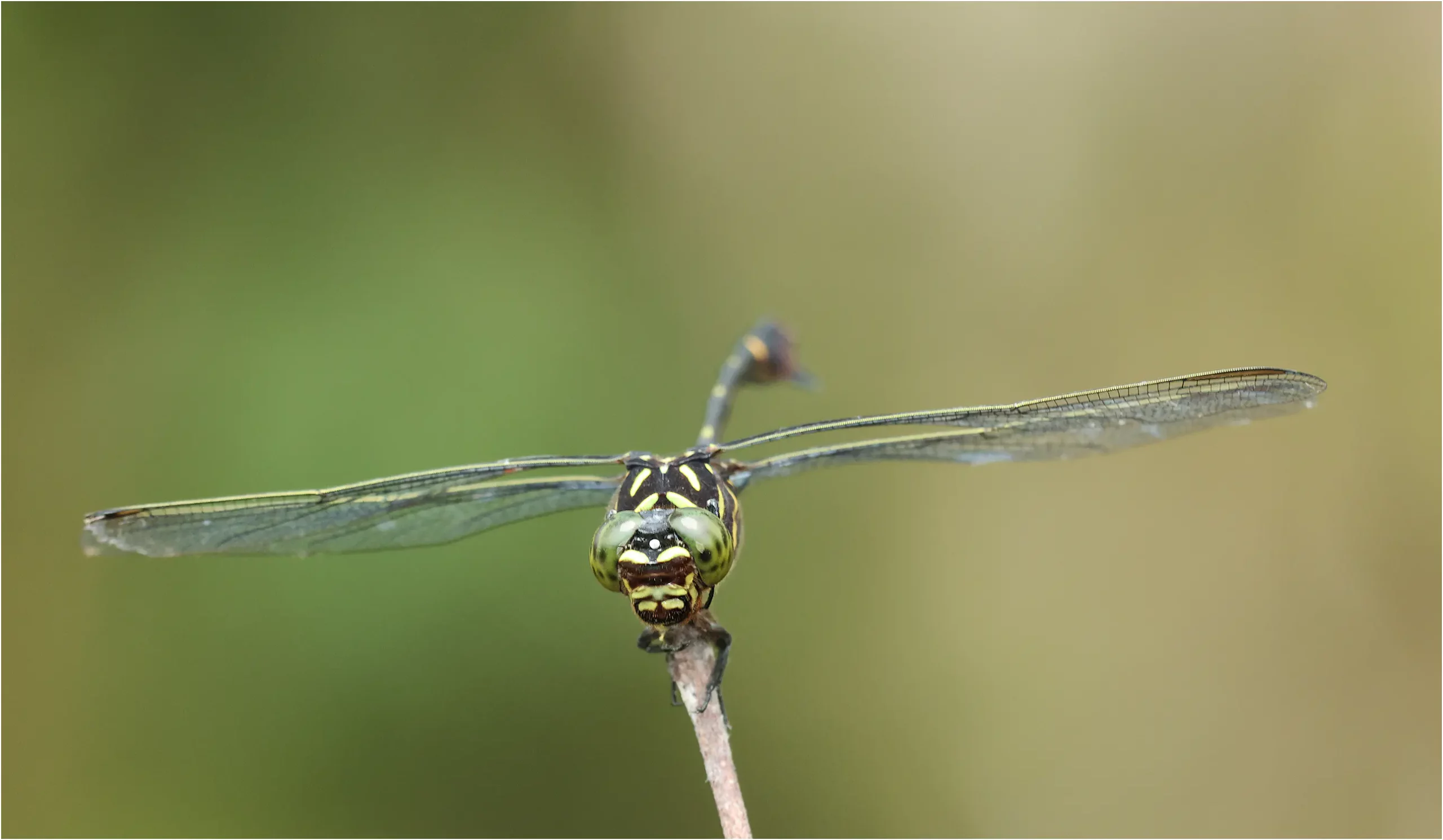
We observed it many times during our prospecting by canoe on the Maludam River, but only after about half an hour of navigation, probably when the sea waters make their influence less felt and the waters become peaty and more acidic (2). Unfortunately, this type of prospecting is very frustrating, because even with all the good will of the pilot, it is very difficult to take decent photos, the discretion of a 6 or 7 meter canoe is very relative.
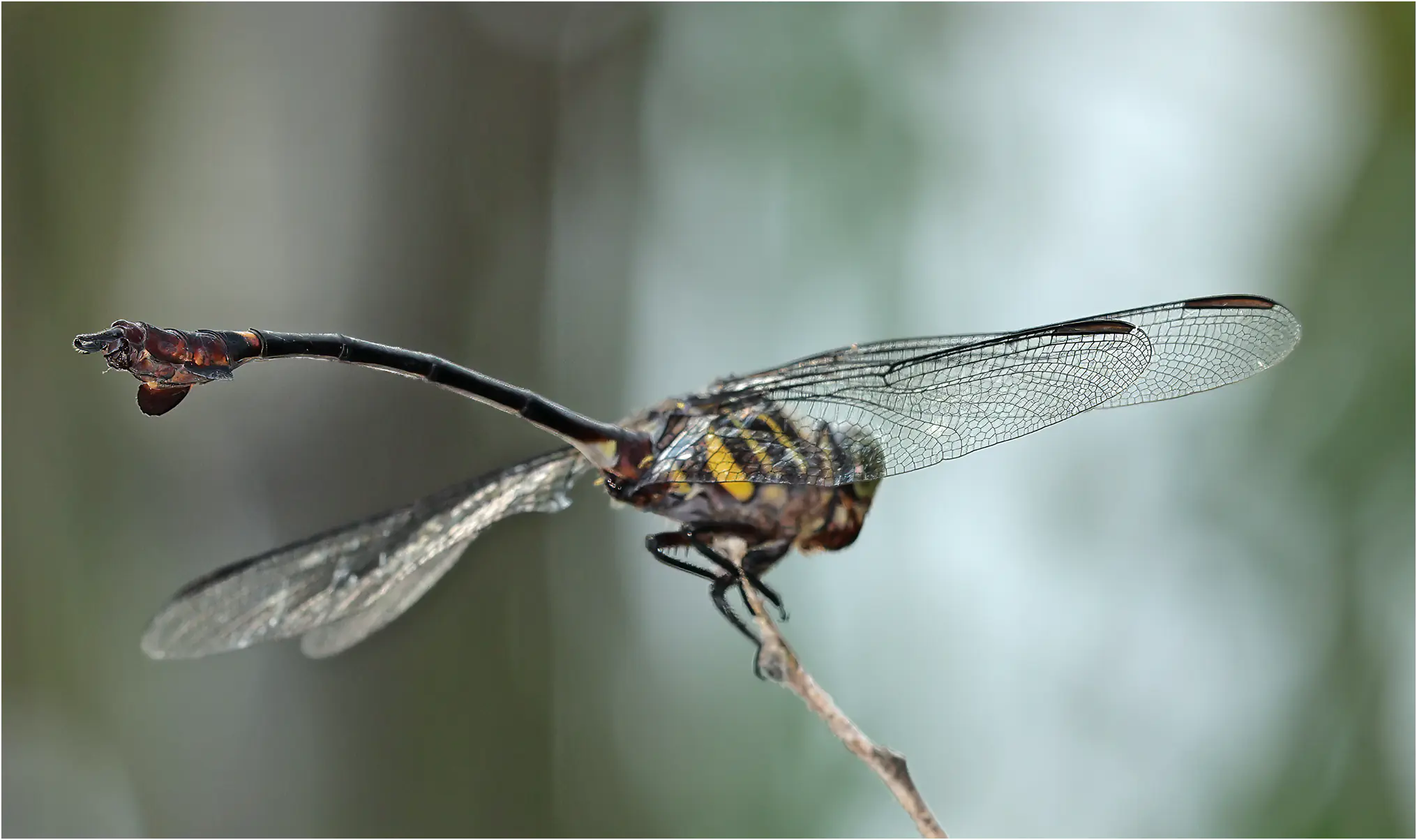
The anal appendages are spectacular for any genus, but I find the ventral expansions of S8 to be even more significant for this species.
Laidlaw writes that the abdomen and anal appendages measure 48 mm, giving it a total length of 65 mm.
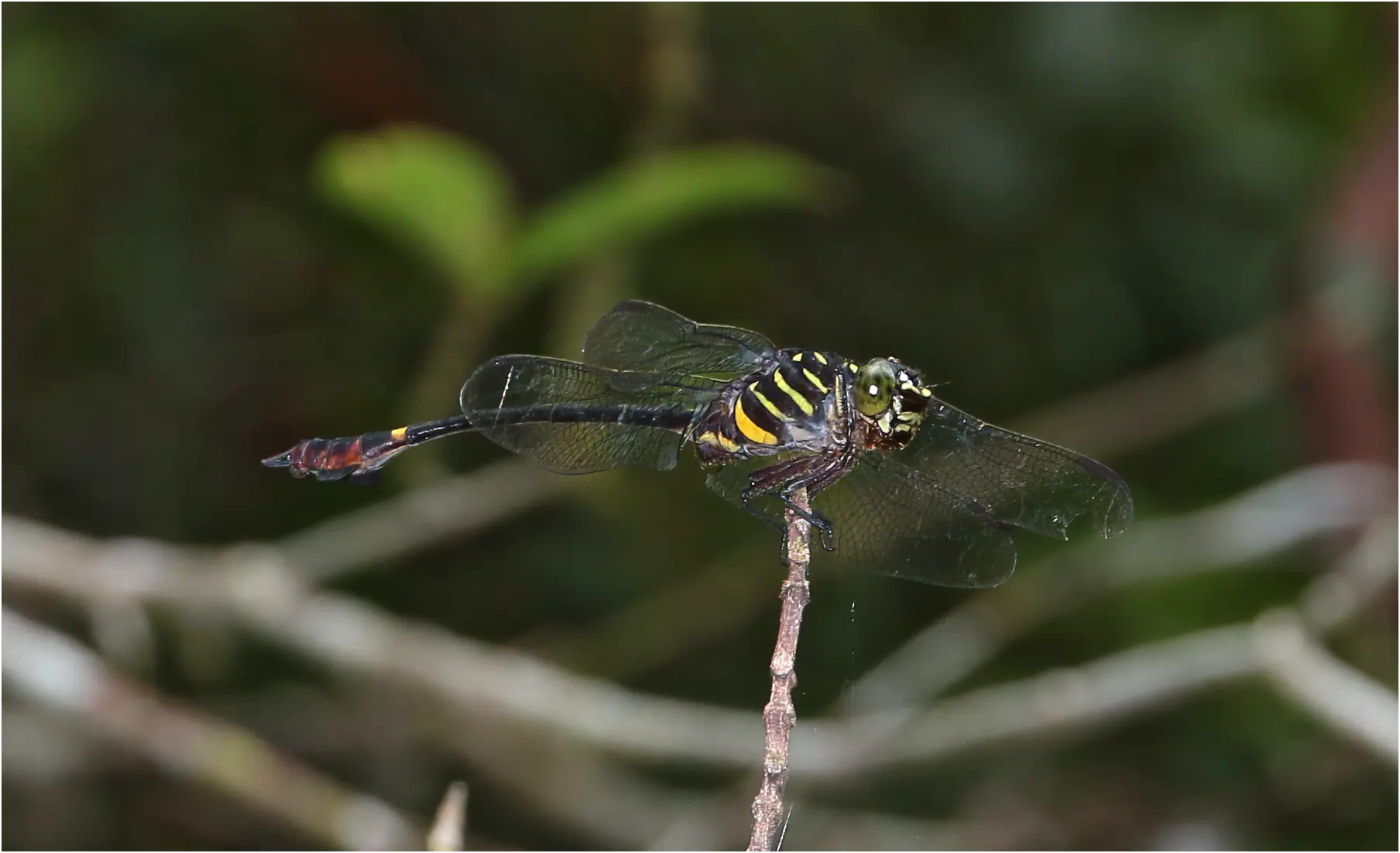
The photos show that their favorite perches are not varied; a branch emerging from a fallen tree in the water seems to be ideal for them to monitor their territory.
The species is present in Borneo on the Malaysian peninsula, but may already be extinct on the island of Belitung.
IUCN Red List .
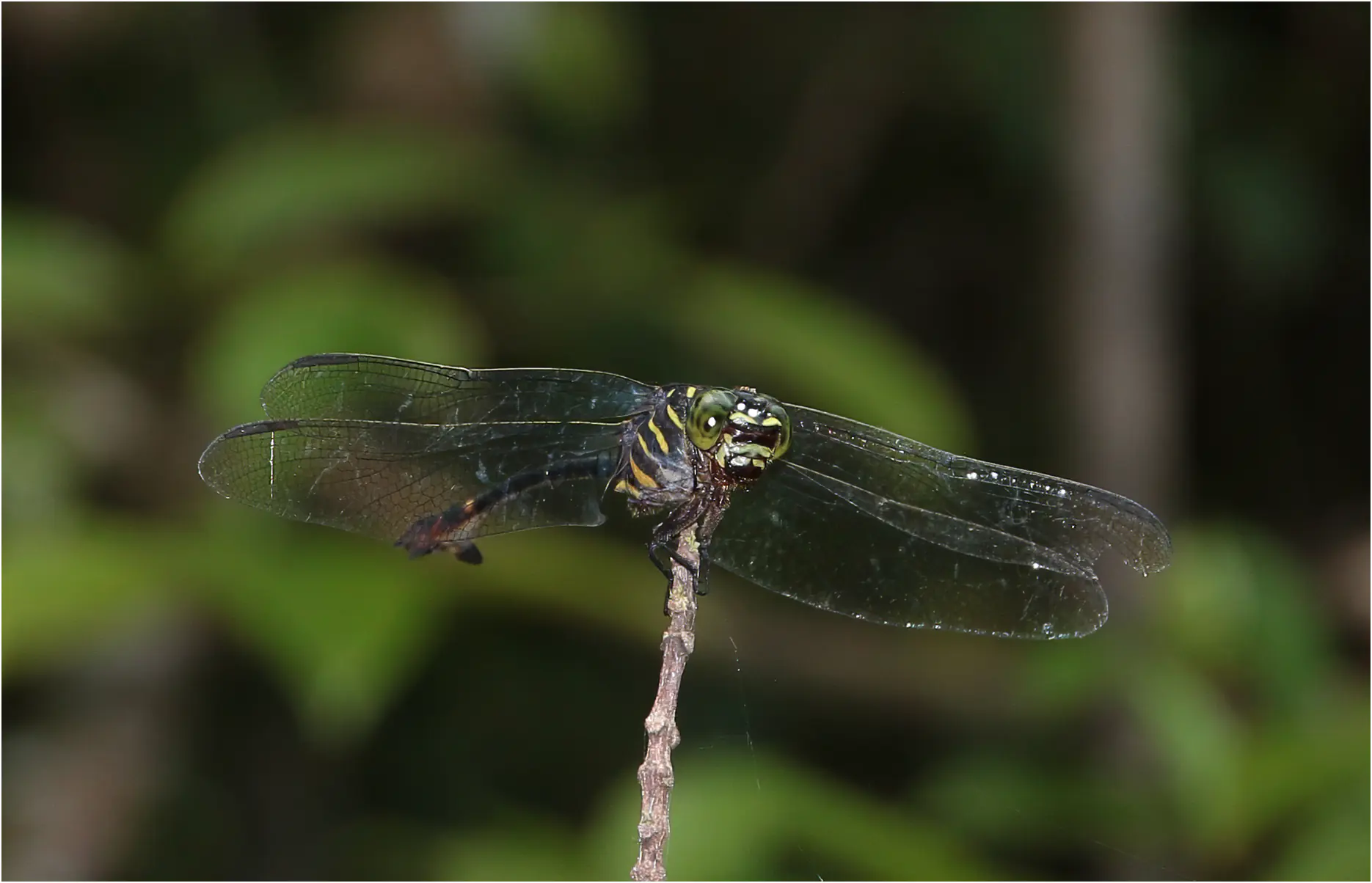
Etymology
Ictinogomphus: the etymology is interesting, because Rambur created the genus in 1842 (3) under the name Ictinus (Ictinus acutus was present in the Selys collection). He was unaware (the web was incomplete and very slow at the time 🙂 ) that this name was already used for a beetle and a bird. This kind of mistake is supposed to no longer happen, institutions have been set up to keep an eye on it. Cowley in 1834 rectified and created the genus Ictinogomphus.
He combined the original name Ictinus with gomphus. Ictinus comes from a Greek word meaning kite and Fliedner (2007), who has provided considerable help with the etymology of odonates, thinks that the very large size of this odonate inspired this name. However, and I completely agree with this, Ian Endersby (4) insists on the role of the ventral expansions of the 8th segment which could have suggested this genus name: and moreover in the original description, Rambur cannot fail to mention them: « Abdomen ayant une dilatation au bord latéral du huitième segment en form (sic) d’écaille ou de membrane large, noire, semblable dans les deux sexes » – “Abdomen having a dilation at the lateral edge of the eighth segment in the form (sic) of a scale or large, black membrane, similar in both sexes (which I do not validate, I think that the expansions of the males are larger)”.
Gomphus comes from a Greek word meaning peg or bolt, in reference to the shape of the abdomen (of most species), which resembles a peg for assembling boats
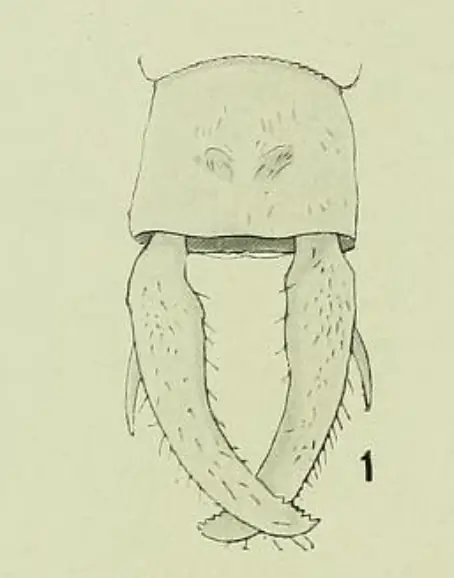
Acutus, from the Latin acutus, means sharp, acute, certainly related to the strong, pointed spine carried by each of the cerci (upper anal appendages), as seen in Laidlaw’s drawing or in my photo below.
Ictinogomphus acutus male, anal appendages, in Laidlaw, 1914 (1)
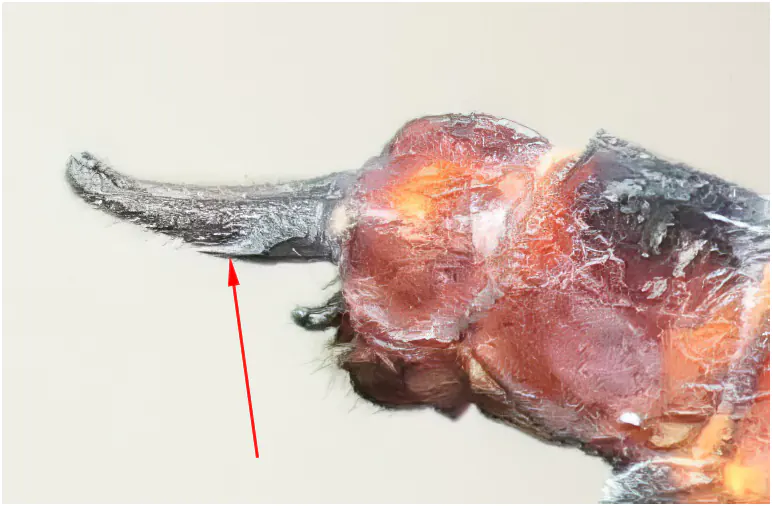
1- Laidlaw, 1914 – Contributions to a study of the dragonfly fauna of Borneo – Part II. The Gomphinae and Chlorogomphinae – roceedings of the Zoological Society of London, 1914, p. 51-63.
2- Dow, R.A. & J. Unggang (2010). The Odonata of Binyo Penyilam, a unique tropical wetland area in Bintulu Division, Sarawak, Malaysia. Journal of Threatened Taxa 2(13): 1349-1358.
3- Rambur P., 1842 – Histoire naturelle des Insectes Névroptères.
4- The Naming of Australia’s Dragonflies, Ian Endersby & Heinrich Fliedner, Busybird publishing.